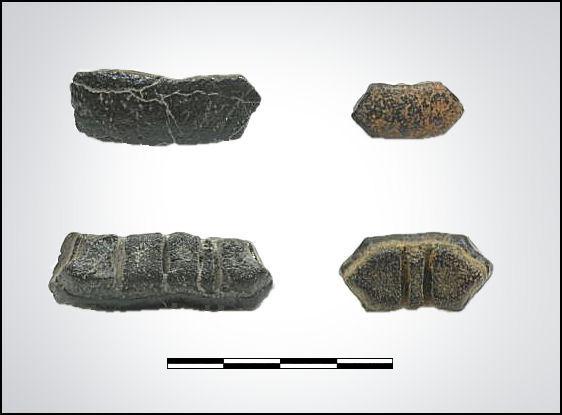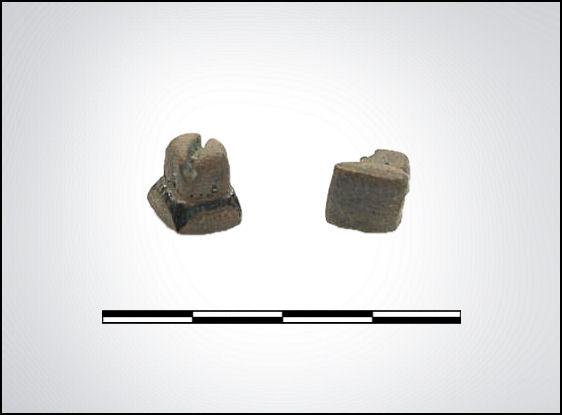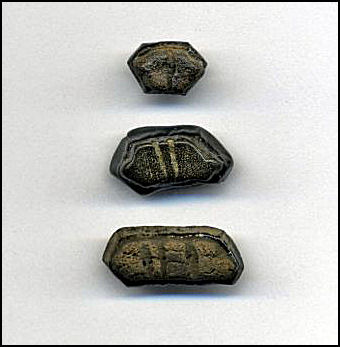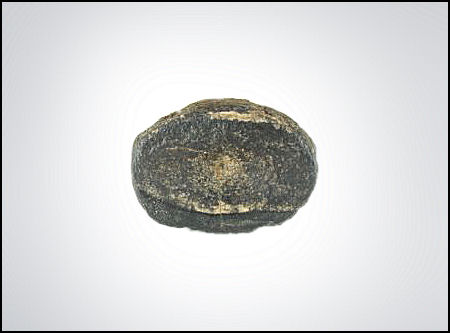|
The Cow Nosed Rays
Age Cretaceous - Occurrence Very common Two species of Cow nosed rays can be found in NJ, Brachyrhizodus wichitaensis and Rhombodus laevis. Both rays have flat crusher teeth that were arranged into a tooth battery with an enamel covered crushing surface. Of the two species Brachyrhizodus wichitaensis is the more common of the two, although this may be due to size. The teeth of Rhombodus laevis are small, usually under ¼ of an inch and can easily fall through the standard ¼ inch mesh screen. Not as common, the dermal scutes and vertebra of these rays can also be found. Both species became extinct by the end of the Cretaceous period.
Left—
Brachyrhizodus wichitaensis
Brachyrhizodus wichitaensis, the larger of the two species has a
hexagonal shape.
Rhombodus
laevis is a small tooth, usually under 1/4 inch and has a distinct
Variations in tooth size and shape can be attributed
to the
The crowns on
Rhombodus laevis seem
very subject to
The vertebrae of the rays have an oval shape. These
can range in |



